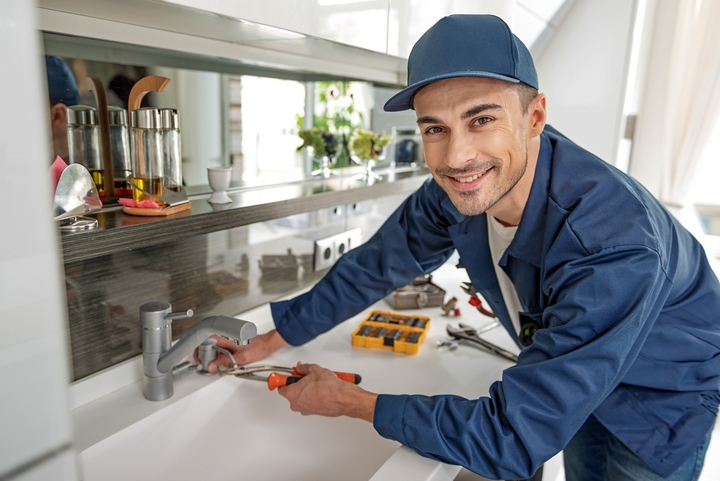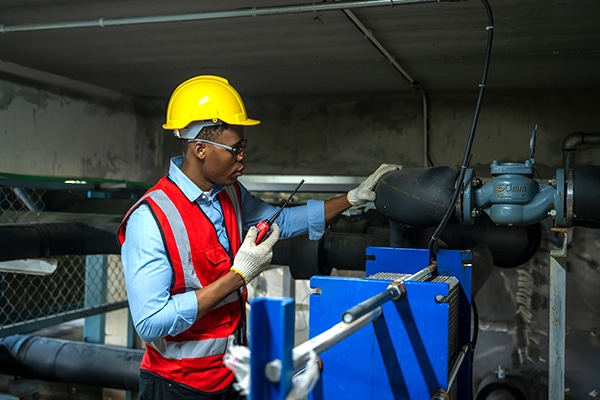The publisher is making a few great annotation related to 7 Plumbing Industry Trends You Need To Know in general in this post further down.

Introduction
The pipes market is undertaking a transformative phase driven by technological improvements and expanding concerns for sustainability and performance. This article discovers emerging patterns and innovations forming the future of pipes.
Smart Pipes Equipments
Integrating smart technology right into plumbing systems makes it possible for remote monitoring, leak detection, and automated maintenance. Smart sensing units and IoT (Web of Points) devices allow house owners and plumbing technicians to keep track of water use and find problems in real-time, causing more reliable resource administration and aggressive upkeep.
Water Performance Solutions
With enhancing emphasis on water conservation, cutting-edge options are being developed to decrease water wastage in plumbing systems. High-efficiency fixtures, greywater recycling systems, and wise irrigation controllers are among the technologies aiding customers lower their water footprint while keeping comfort and ease.
Sustainable Materials
The change in the direction of sustainability reaches plumbing products, with an expanding preference for eco-friendly options. Eco-friendly piping materials, such as PEX (cross-linked polyethylene) and HDPE (high-density polyethylene), offer toughness and resistance to rust without jeopardizing environmental integrity.
Anticipating Upkeep
Predictive maintenance techniques utilize data analytics and machine learning formulas to prepare for and avoid pipes issues prior to they take place. By evaluating historic data and efficiency metrics, anticipating maintenance algorithms can identify patterns and abnormalities, allowing proactive treatments to stay clear of costly repairs and disturbances.
Increased Fact in Pipes
Enhanced Fact (AR) modern technology is revolutionizing plumbing by giving specialists with real-time visual support for troubleshooting and repair tasks. AR-enabled wise glasses or mobile applications overlay electronic details onto the physical environment, assisting plumbings envision pipeline designs, recognize surprise leaks, and implement repair services with precision.
Effect of 3D Printing
The advent of 3D printing has actually presented new possibilities in making pipes components. From custom-made fixtures to elaborate pipe fittings, 3D printing permits rapid prototyping and on-demand manufacturing, minimizing preparations and enabling higher modification in pipes layout.
Health And Wellness Characteristics
In response to heightened issues for health and wellness, pipes fixtures are incorporating features such as antimicrobial surfaces, touchless operation, and self-cleaning mechanisms. These advancements not just boost hygiene but likewise promote user convenience and convenience.
Hygiene-focused Components
Touchless faucets, self-sanitizing bathrooms, and antimicrobial surfaces are ending up being progressively common in household and industrial setups, minimizing the threat of bacterium transmission and promoting a cleaner, much healthier environment.
Water Top Quality Monitoring
Developments in water top quality surveillance innovations enable homeowners to check the pureness and security of their water in real-time. Smart water quality sensors can identify impurities, pH degrees, and temperature level variations, equipping customers to take proactive procedures to make sure water security.
Remote Plumbing Services
Remote diagnostics and virtual support are changing the method pipes services are provided. Through video clip conferencing and remote gain access to innovations, plumbing professionals can fix issues, give assistance for do it yourself repair services, and also carry out remote inspections, providing better ease of access and ease to house owners.
Difficulties and Opportunities
While plumbing advancements hold enormous assurance, they additionally existing challenges such as data privacy worries, governing conformity, and the demand for workforce training. Dealing with these challenges calls for cooperation between sector stakeholders and regulative bodies to make sure safe and liable implementation of new innovations.
Governing Landscape
Regulatory structures play a critical role in shaping the adoption of plumbing developments, with requirements and codes regulating whatever from water performance to item safety. As innovations continue to advance, governing bodies have to adapt to make certain consumer protection and ecological stewardship.
Future Expectation
The future of pipes is characterized by proceeded technology and combination with other industries such as IoT, renewable resource, and structure automation. By accepting lasting methods, leveraging arising innovations, and prioritizing user-centric layout, the pipes sector is positioned to address the progressing needs of society while lessening its ecological footprint.
Conclusion
In conclusion, the future of pipes is defined by a convergence of technology, sustainability, and user-centric style. By embracing smart remedies, sustainable materials, and aggressive upkeep methods, the plumbing industry can boost effectiveness, advertise security, and contribute to a more lasting future.
Plumbing Industry Trends You Need To Know
Smart technology in plumbing
Homeowners want to be able to manage their homes from their phones. The technology exists to make that happen. From smart toilets to leak detector devices, the whole plumbing system can be managed on an interconnected network made up of sensors, IoT devices, and machine learning algorithms.
This allows for wireless control to turn appliances on and off, automate routines, and access advanced monitoring to track water usage and flag potential issues. Smart technology streamlines water consumption, maintenance and energy usage, creating a more efficient system.
Green plumbing
The data analysis possible with smart technology not only improves convenience and cost-effectiveness but also fulfills a high-priority customer desire – sustainability. Consumers are very aware of their impact on the planet and want plumbing solutions to reduce damage and support sustainability. Eco-friendly plumbing solutions are already starting to emerge.
Customers can opt for low-flow toilets, water-saving faucets, and connections to sustainable energy sources. Beyond monitoring water consumption, customers can conserve water through the installation of greywater systems. This is a system that collects water that has been used but is still clean enough for some household uses such as toilet flushing.
Shorter product pipeline
To keep up with modern plumbing, plumbers need modern tools that enable them to complete jobs more efficiently. One technology making strides in this area is 3D printing. By 3D printing key plumbing fixtures, plumbers can reduce wait times even for specialized fixtures. It minimizes delays often seen in traditional manufacturing that frustrate customers and prevent plumbers from taking on more work.
Off-site repairs
Augmented reality is making a splash in many industries including plumbing. Plumbers can map a building online so they can explore the plumbing system through augmented reality, identifying areas of maintenance and repair completely digitally. This technology can be applied quite widely in plumbers’ work including planning installations and training new recruits. It’s safer, smarter and more efficient.
Low-footprint materials
Another way for plumbing companies to reduce their environmental footprint and meet the customer demand for sustainability is by using recycled materials in their work. The products they source and manufacture such as pipes, fixtures and faucets can be made from recycled materials. This saves the planet while being just as effective.
Onsite water purification
Additionally, plumbing companies can be advocates of water conservation and ease the financial and environmental concerns of customers by offering water purification systems. New water purification technology such as reverse osmosis systems and UV systems make it possible for homeowners and business owners to thoroughly cleanse water, removing contaminants onsite. This means the water can be safely reused in more ways than greywater can be, establishing a water recycling loop.
Tankless water heaters
Another innovation of modern plumbing is tankless water heaters. The idea is that the water is heated on demand as it runs through the system instead of being heated in a water tank. This is more energy efficient and therefore cost-effective and eco-friendly because water isn’t heated needlessly.

I discovered that review on while doing a search on the search engines. In case you liked our page if you please remember to pass it around. I value your readership.
Call